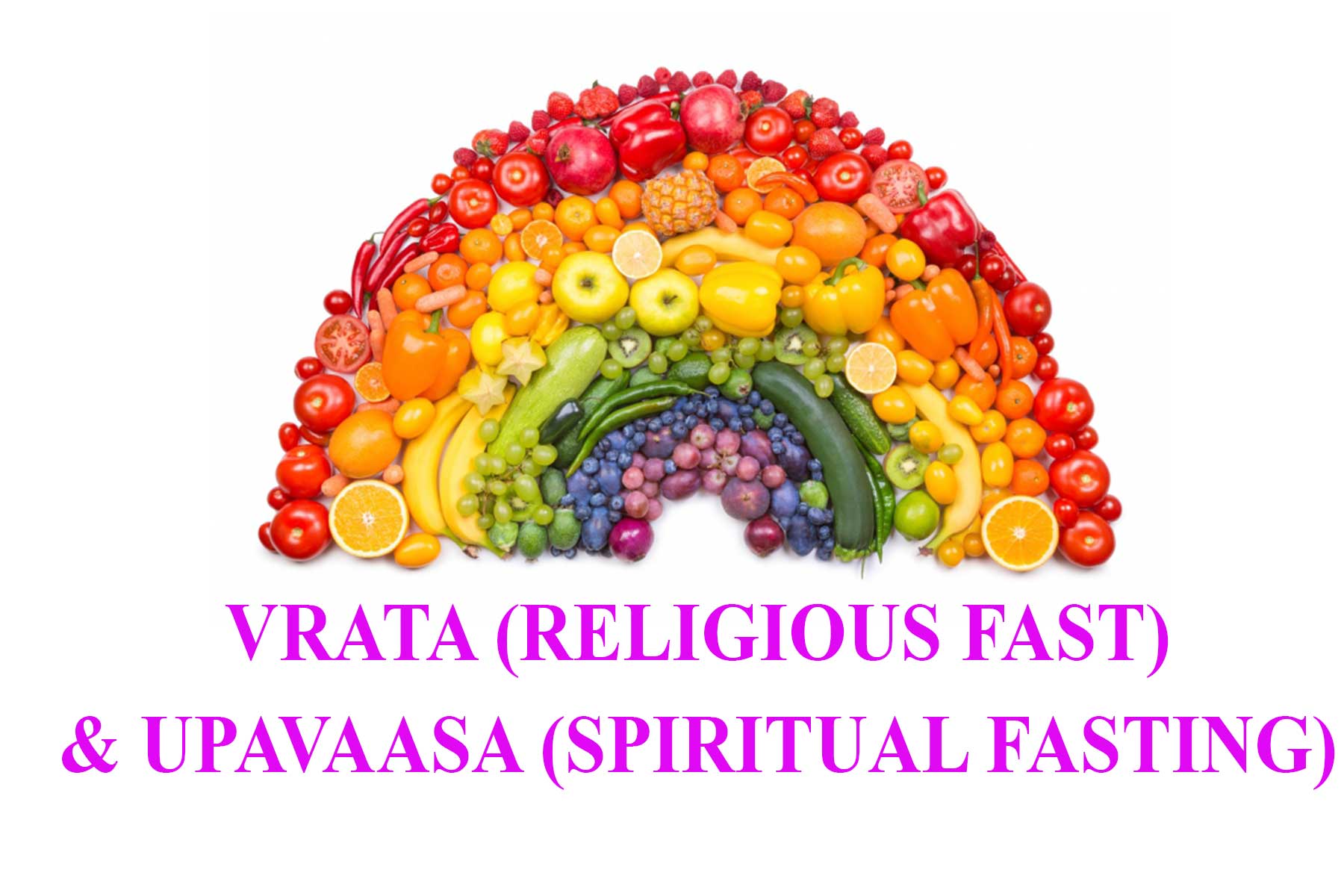
16 Mar 2022 HYN Himalayan Yoga Academy
Upavaasa (Fasting):
Literally, Upavaasa (उपवास) means Abstinence or staying closeness to nature. Upa + Vaasa means ‘Upa’ stands for near and ‘Vaasa’ stands for stay means staying close to nature or the supreme soul. In general, fasting means total abstention from taking any kind of food for a definite period but it gives broad meaning that sorts of all the essences of life to harmonize the body, mind, and soul for spiritual exploration.
Vrata (religious fast) & Upavaasa (Spiritual Fasting)
Fasting is an integral part of Sanatana Upasana which not only provides freshness to life but also fuels spiritual & religious development and therapeutic change as well. All the religions of the world have adopted the practice of fasting in some form. But in the the Sanatana system, fasting is always associated with other actions to purify the body and bring calmness to the mind which is essential for spiritual upliftment.
While fasting is more related to the intake of food & drink, Upvaasa and Vrata have more spiritual connotations. The purpose of Upavaasa is to imbibe the virtues of the almighty. Vrata is a cultural commitment, and religious practice, and also evolves mental discipline and spiritual exploration. Vratas gives the strength to withstand the temptations of the instinctive forces. Fasting, Upavaasa and Vrata together purify the body, mind, and soul and it gives health, happiness, and harmony.
Religious prospective:
During Upavaasa, the person observes chastity, solitude, silence, and does self-introspection. Upavaasa is just not fasting, on that day; the persons choose to be near their favorite deity, control on all the senses is exercised, withdraw from regular activities, go to the temple, worship to God or find a secluded place for their devotion.
Varah Upanishad has explained that the purpose of Upavaasa is to be near to God, to worship God, to imbibe the virtues of God in life. It is not the name of torturing the body.
Vrata – Sacred Vow, Sankalpa – Resolve
Vrata has two words in Sanskrit, “Vr” means discipline and “rta” means regularity. In Vrata, the person makes self-commitment to abstain to do certain acts or make vows for spiritual practice. It is basically self-sacrifice or mental discipline. Vrata is a binding force, binding the external mind to the soul and the soul to the Divine. Taking a vow is a sacred trust between yourself, your outer self, your inner self, and your loved ones. A religious vrata is a contract between yourself, the religious community, the Gods and your guru.
References to the vratas are found in the Samhitas, Brahmanas, and Aranyakas of all four Vedas. In Vedas, Rudra is mentioned as the lord of Vratas (Vratapati).
While performing vratas, one must abide by several rules such as one should keep oneself clean and pure, observe celibacy, speak the truth, practice forbearance, avoid non-vegetarian foods and scrupulously perform all the rituals connected with it. Vratas prepare the person for self-transformation and realization.
Types of Fasting are as under: (Sabhaar from Net)
Dainik (Daily) Upavaasa (Fasting): when a person decides to observe fast on a particular day or date. It is motivated by spiritual inspiration.
Kamya or Naimitik Upavaasa (Fasting): when a person observes fast with an object of special desire
Ayachit Upavaasa (Fasting): when a person undergoes fasting one-time food in a day without any desire.
Nakta Upavaasa (Fasting): when fasting is done for night food.
Ekabhukta Upavaasa (Fasting): when fasting is done morning, afternoon, or evening as per convenience
Prajapaty Upavaasa (Fasting): This type of fasting is completed in twelve days. When the intake of food increases for three days successively and after nine days, no food is taken in the last three days.
Chandrayan Upavaasa (Fasting): This type of fasting is linked with the waxing and waning of the moon. During the period of waxing of the moon, the intake of food is increased gradually and during the waning of the moon, the intake of food is reduced gradually and on the new moon, no intake of food is done.
Tithi Upavaasa (Fasting): Fasting is done on the 11th day, 4th day, day of the new moon, etc. as per the Hindu calendar.
Maasika (Month) Upavaasa (Fasting): Fasting done in specified months of sanatan calendar such as Magh, Kartik, Vaishakha etc.
Pakshik Upavaasa (Fasting): Fasting is done during the period of waxing of the moon or waning of the moon.
Stellar Upavaasa (Fasting): Fasting done during a particular stellar constellation such as Anuradha, Rohini etc.
Devas Upavaasa (Fasting): When fasting is done to please the gods such as Shri Ganesha, Bhagavan, Shiva Vishnu, etc.
Saptahik (weekly) Upavaasa (Fasting): Fasting one on different days of the week.
Pradosh Upavaasa (Fasting): Fasting is done on the 13th day of the Sanatana calendar.
Merits of Upavaasa:
The ancient eastern medical system of Ayurveda sees the basic cause of many diseases as the accumulation of toxic materials.
- Regular cleansing of toxic material keeps us healthy.
- Fasting overhauls the respiratory, circulatory, digestive and urinary system.
- In moderate fasting, the organs of the body are cleansed and renewed.
- As per research report published in Medical News on 7.11.2018, the benefits of intermittent fasting (an eating cycle that includes periods of fasting of around 12–36 hours) based on research are as under
- Weight loss
- improved markers of health
- A reduced risk of chronic health conditions i.e. type II diabetes and heart disease.
- Improved brain health
- Apart from losing weight, occasional fasting may also help to boost metabolic activities, generate antioxidants, and also helps reverse aging, says a study published on 11.02.2019 on India Today web desk.
- Physical benefits, at spiritual level, fasting purify the mind, controls passion, checks emotions and controls the senses.
- Fasting makes us ascend to a higher level.
